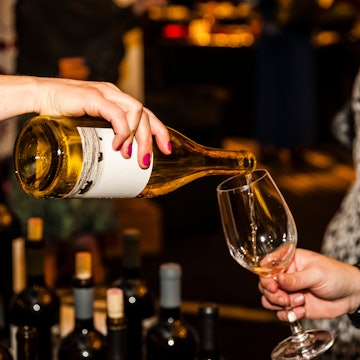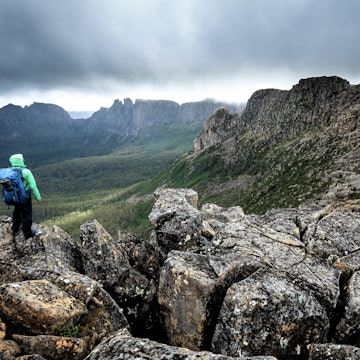

Plan your trip to Portland with our tips on packing, safety and local etiquette. Getty Images
It was a reclaimed furniture store on Hawthorne Blvd that convinced me to move to Portland. I popped in, road-weary after weeks of driving cross-country, trying to decide where I wanted to land after living on the East Coast for most of my life. Something about the kaleidoscope of colorful old furniture, the candy-jar abundance of funky light fixtures hanging from the ceiling, and the mid-century paintings of mountains and rivers on the walls made me suddenly want to stay awhile. I sensed a creative but cozy energy in that shop that I projected onto the city – and it just felt right.
Ten years later, I still call this city home. It’s funny to me now that a single store convinced me to move to a place that is so layered, like a vintage armoire that’s been painted again and again and again. Oh, how much I didn’t know. But the city is both more delightful and more flawed than I ever could have imagined.
If you’re visiting Portland, you’ll want to get a little lost. Our food scene, bars, coffee shops, thrift stores and surrounding nature make this a city in which your senses will guide you. Portland’s reputation often precedes it, but I promise, it’s even better than whatever you’ve heard.
Before you embrace the unexpected, here are some helpful things to know,
1. Allow extra time at the top-notch airport
And not because it takes a long time to get through security. Portland International Airport was already a lovely place, as far as airports go. But in the late summer of 2024, PDX revealed the new terminal that’s been quietly under construction since 2020, and it is perfectly, gorgeously Portland. There are trees planted throughout and a wavy wooden roof made from Douglas fir timber, all sustainably harvested within a 300-mile radius.
And the food! You won’t be scarfing down some price-hiked airport McDonald’s here. All of the shops and restaurants are local favorites. You can sample some of 90 local beers at Loyal Legion, order fresh pasta at Grassa or pick up a dozen artfully flavored donuts from Blue Star.

2. The city is divided into six "quadrants"
Portlanders refer to the city’s sections as “quadrants,” even though there are six of them. We know it doesn’t make sense, but that’s just how it is.
The main divisions of the city are the Willamette River, dividing the east and west sides, and Burnside Ave, which splits the north and south. These are the quadrants you’ll hear referenced most regularly: Northwest (Forest Park and Slabtown), Northeast (Alberta Arts District and the Hollywood Theater), Southeast (Mount Tabor, Hawthorne, and Division) and Southwest (downtown and Multnomah Village).
But then there is North Portland, tucked into the crook of the Columbia and Willamette rivers, where you’ll find old-Portland vibes and a stunning Gothic suspension bridge in St John’s.
Some Portlanders stop at five, but officially, a slim slice of land in Southwest became South Portland in 2020, making it the sixth “quadrant.”
Within those six quadrants are 95 distinct neighborhoods to explore. So, forget math and get moving.
3. Hiring a car is a good idea to explore the city and beyond
Portland’s access to the outdoors is unparalleled. Drive 30 minutes outside of the city, and the urban landscape melts away into farmland to the west or the dramatic beauty of the Columbia River Gorge to the east. Mt Hood’s snowy slopes are just over an hour away, and the coast is about two. The Willamette Valley, Oregon’s beloved land of pinot noir, is about an hour away.
If you’re looking to enjoy the dazzling variety of nature that can be found outside of Portland, you can easily tuck a couple of day trips into your visit, but you’ll want a car to do so. A car also makes it a lot easier to get around town. Just beware of passive drivers, daydreaming pedestrians, and “two-way” roads that can barely fit one car. (We take turns.)
4. Powell Butte Nature Park has the best views
Less popular than Forest Park and Mt Tabor, this swath of preserved nature in deep Southeast Portland is worth a visit, especially on a clear day. Powell Butte Nature Park is 611 acres of meadowland and forest and is home to an abundance of wildlife, including coyotes and birds of prey. The 8 miles of gently rolling trails are well-marked and family-friendly.
Mountain Loop Trail will bring you to the top of Powell Butte, an extinct cinder cone volcano, where you can stand in a ring of markers pointing the way to distant peaks, including active volcanoes Mt St Helens and Mt Hood.
Back near the parking lot, the Portland Water Bureau hosts a museum and interpretive center where you can learn about Powell Butte’s role as a central water hub and how water flow is managed throughout the city.

5. Downtown is still worth a visit despite what you may have heard
Portland is generally a very safe city to explore. But chances are, you’ve heard some things about our downtown. It’s true that since the pandemic, this central hub of activity has suffered. The shift to remote work left office buildings empty, and businesses struggled without the weekday traffic. Many of them closed.
Colliding issues, including a housing crisis and a lack of mental health and drug addiction services, have exacerbated the issue of people living on the streets here. You will see this if you visit downtown.
All that said, downtown is a generally safe place, and much has been done to revitalize the area in recent years. There are still beloved establishments in downtown Portland that shouldn’t be missed, like Powell’s City of Books and the Lang Su Chinese Garden. But of course, it’s important to be aware of your surroundings, know where you’re going and use common sense.
6. Fire season can affect air quality
Climate change is fueling increasingly devastating wildfires across the West. Despite our notoriously wet climate, Portland is not immune. Summers are getting hotter and dryer, and wildfires are more frequently impacting the whole state.
If you’re visiting between July and October, you might experience smoky days. Smoke in the air can cause itchy eyes and throat. If you spend too much time outside, you might experience a headache or nausea. Check the air quality index (AQI) to determine if it's safe to be outside on these days. Anything over 100 can be unhealthy for sensitive groups, like children, the elderly and people with asthma. If it’s over 300, everyone should stay indoors. You can find the AQI through the weather app on your phone or at AirNow.
7. Wear whatever you like! Portland is a casual city
If you’re trying to pack in the activities with a combination of outdoor adventures and some classy meals and nightlife, don’t worry too much about outfit changes. While there are plenty of dining establishments where you’ll see magazine-worthy style on display, it’s also perfectly acceptable to wear activewear to dinner at most places in Portland.
If you’re rushing from a big day on Mt Hood to dinner in the city, you’ll find plenty of places with top-notch food, where you’ll be comfortable plopping down in your yoga pants and beanie.

8. The beer is strong, and the food is hard to beat
Portland is kind of obsessed with their IPAs, a style of beer that is extra hoppy and typically comes with higher-than-average alcohol content. Thankfully, most bars list the ABV on the menu, so you know what you’re getting yourself into.
As for the food, you don’t have to “know where to go” to find excellent food in Portland. We keep the bar high, so it’s hard to go wrong. Food truck pods are great destinations for traveling groups who want to try a little of everything, and you’ll find them in every neighborhood.
We also have excellent farmers markets. On Saturdays, check out the PSU Farmers Market or the Hollywood Farmers Market to stock up on fresh, local produce.
9. Bring an umbrella for those rainy days
If it isn’t July, August, or September, you’ll probably see rain in Portland. If you come in the winter months, you’ll see a lot.
Perhaps you’ve heard that locals can spot tourists because they’re the only ones carrying umbrellas. After 10 years here, I no longer buy this logic. Sure, a good rain jacket and waterproof shoes can be more trustworthy than an unwieldy umbrella. But on extra soggy days, it’s good to have that canopy of protection on hand.
















